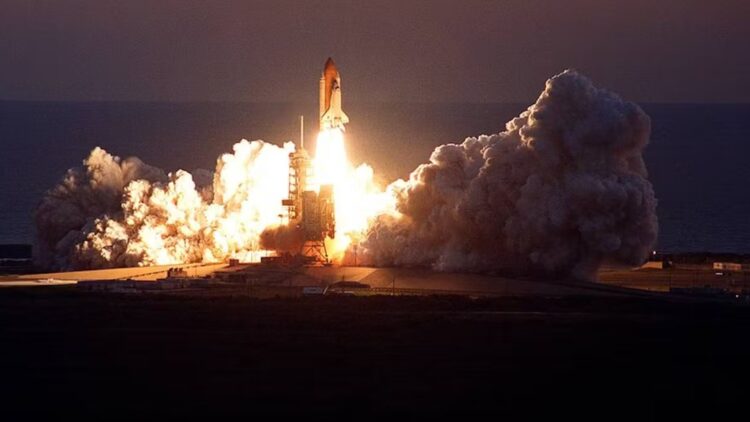As the world shifts towards viable energy solutions, hydrogen emerges as a key player in propelling humanity beyond our planet. The European Space Agency (ESA) and France’s space agency CNES are making huge strides in harnessing hydrogen, particularly for the Ariane 6 rocket. With a commitment of €40.5 million ($42.6 million) to develop a solar-powered hydrogen production facility, the future of space exploration and energy sustainability looks promising.
Ariane 6: Transitioning to sustainable hydrogen production
The Ariane 6 rocket, which will utilize liquid hydrogen and liquid oxygen as fuel, currently depends on hydrogen produced through steam reforming of methanol at the Guiana Space Centre in French Guiana. While this method is efficient, it generates greenhouse gases that contribute to global warming.
To address the environmental impact, the ESA and CNES are shifting to solar-powered electrolysis of water for hydrogen production. This process drastically reduces carbon dioxide (CO2) emissions, thereby aligning with global sustainability goals.
Project Hyguane—a combination of the French words for hydrogen and Guiana—aims to establish a solar farm dedicated to producing greener hydrogen. Set to be operational by 2026, the facility is designed for future expansion to accommodate rising hydrogen demands.
Once fully operational, it’s projected to supply 12% of the hydrogen required for Ariane 6’s nine launches annually, resulting in a reduction of over 3,000 tons of CO2 emissions each year.
Hydrogen production: A collaborative effort for a clean future
The collaboration between ESA, CNES, and various partners—including Air Liquide, SARA, MT-Aerospace, and BEBLUE—highlights the importance of Project Hyguane. Academic institutions such as the Université de Guyane, Université de Liège, and Université Libre de Bruxelles are also involved, boosting research and technological development.
Additionally, the French Environment and Energy Management Agency is contributing €10 million ($10.5 million) to support this cutting-edge initiative.
Teddy Peponnet, head of the project for ESA, expressed enthusiasm about the facility’s potential, stating, “This novel facility will be a shining example of carbon-free production of hydrogen when it opens, and we aim to set an example for a more sustainable future.”
The road ahead: Hydrogen production in space exploration and beyond
The impact of this project extends beyond the aerospace sector. The hydrogen produced at the Guiana Space Centre will also be used to power low-carbon vehicles and electricity generators in French Guiana. It will facilitate the transition to hydrogen-powered transport, providing a cleaner alternative to diesel engines, thus contributing to local sustainability efforts.
A refueling station designed by SARA, along with a Hydrogen Competence Centre managed by MT-Aerospace, will bolster the development of low-carbon transportation in the region. This infrastructure is vital for the adoption of hydrogen fuel cells across various applications, from electricity generation to public transport.
The outlook for Project Hyguane looks promising, with plans to potentially double hydrogen production if demand increases. This expansion may involve supplying hydrogen for additional vehicles such as buses and trucks, further boosting the local economy and reducing CO2 emissions.
As such, this advancement in solar energy technology has made it possible to move away from more traditional, polluting methods of hydrogen production.
Indeed, hydrogen stands as a crucial element in humanity’s quest for viable energy strategies, with the potential to transform not only space exploration but also various sectors such as public transport and renewable energies. As Peponnet aptly puts it, “Green hydrogen is ready to fly! The technical revolution is on its way.”
Through initiatives such as Project Hyguane being put into motion, humanity is not only gearing up for life beyond Earth but is also laying the essential groundwork for a clean, green future on our planet.

